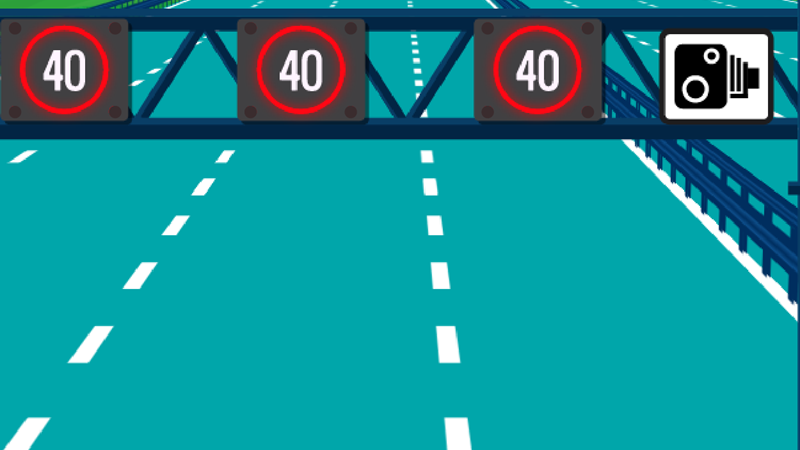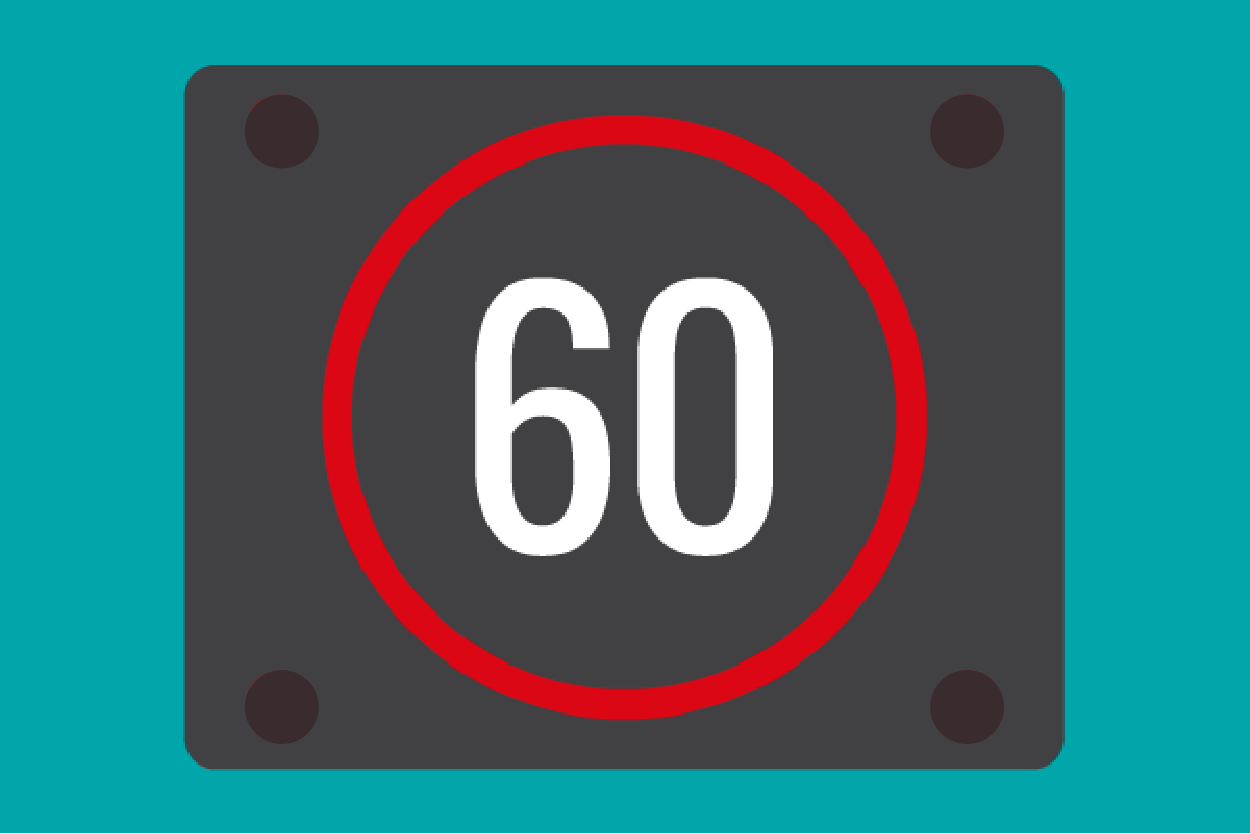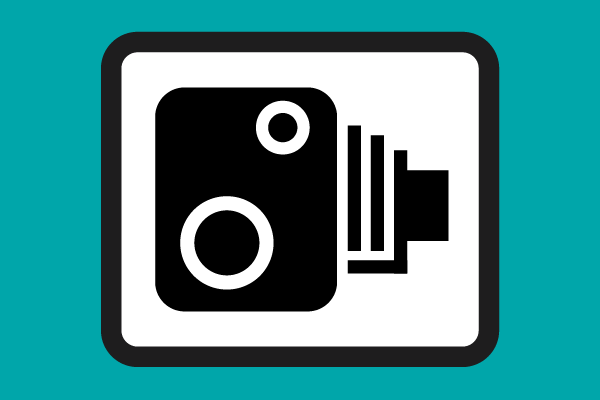Variable speed limits
We set and manage variable speed limits (VSL) to look after your safety and to improve traffic flow on our roads.

Government and industry research has shown that the use of excessive speed on our motorways is common. Our statistical analysis of traffic incidents confirms the strong relationship between vehicle speeds, the likelihood of collisions, and the severity of resulting injuries. The safety of our customers and our work force is our top priority, so we have an important role in managing speed on our road network.
We also use VSL to manage traffic flows and reduce customer journey times.
Complying with VSL
Any speed limits displayed within a red circle must be complied with or you will be breaking the law.

There are several reasons why speed limits may be lowered temporarily. This includes traffic congestion (actual or likely), roadworks, our traffic officers working in vulnerable locations, extreme weather conditions and incidents. The reason may not always be clear or evident to customers on our roads, but the displayed mandatory speed limit is always enforceable, irrespective of the reason for it. We do not need to justify, or provide reasoning for, a lowered speed limit for that limit to be legally enforceable by the police.
Whatever the reason for the setting, the speed limit you see displayed will always be enforceable.
When the speed limit changes
When a change in speed limit or a closed lane signal is detected, the relevant enforcement device performs a self-check procedure, at which point vehicles passing it may notice a flash from the equipment. This flash does not necessarily indicate that your vehicle has been identified as exceeding the displayed speed limit.
To allow drivers to reduce their speed sensibly and safely, the police ensure a minimum time delay between any change to the variable speed limit displayed and the actual enforcement of that new speed limit.
Any questions about enforcement should be directed to the responsible regional police constabulary.
VSL enforcement
We’re not a law enforcement authority and are not responsible for the enforcement of the variable speed limits which we set.
The police are responsible for all matters concerning the enforcement of VSLs. All evidence required for the prosecution of speed offences on our motorways is collected by the police. We don’t collect or hold such evidence.
Any matter relating to the administration of a prosecution for a speeding offence is dealt with by the police. Evidence held by the police is disclosed in accordance with The Criminal Procedures and Investigation Act (CPIA) and the respective responsibilities of the police and the Crown Prosecution Service
Prosecutions
If you receive a Notice of Intended Prosecution (NIP) from the police, we advise you to consider:
The benefits of attending a speed awareness course if offered
In some cases, you may be eligible to attend a speed awareness course instead of losing points on your driving licence. This course gives drivers and riders essential advice to help them change their on-road behaviour and reduce the likelihood of reoffending. The course is designed to be interactive and engaging and has been remarkably well received by those attending it. If your notice includes an invitation to this option, we encourage you to take it up.
The risks of challenging the intended prosecution
You should be aware that if you intend to challenge your NIP, you may have to defend your case in court.
If the court then finds you guilty of the speeding offence they can:
- give you an increased number of points on your licence
- increase the penalty fine
- charge you for the court costs
Speed detection equipment
We provide the speed detection equipment for VSL enforcement to the police. Camera signs mark sections of the motorway where vehicle speeds may be detected.

The equipment records an image of a speeding vehicle, the vehicle registration number and the speed it is travelling, the time and date, and photographic evidence of the speed limit being displayed as the vehicle passes it.
We don’t have access to the data captured by the speed detection equipment installed on our motorways.
The data collected by these speed cameras is transmitted directly and securely to the regional police constabulary responsible for enforcement of the relevant speed limits.
All speed detection equipment used for law enforcement on our roads has received Home Office Type Approval (HOTA). This means it has been tested and approved to meet the high standards of reliability and accuracy demanded by the courts.
Section 20 of Road Traffic Offenders’ Act 1988 establishes that evidence from Type Approved and prescribed devices be admissible in court by way of certification. The approval process gives the public and the courts reassurance that measurements from the device can always be relied upon as such evidence. It is of paramount importance that this evidence is of such unquestionable accuracy and quality that it is readily accepted by the courts and public.
It is therefore the purpose of the HOTA process to ensure this is the case.
View the National Police Chiefs' Council Guide for the operational use of speed and re-light offence detection technology.
Records of VSL settings
We retain records of our VSL settings, but these are suitable for our internal operational purposes only. The data is not validated for external use and is generally held in a form designed to be analysed and interpreted by our specialist experts. This means it is not easily intelligible by non-experts.
Records we hold of VSL settings are not as accurate or reliable as the evidence held by the police, which is collected from Home Office approved speed detection equipment.
Visibility of VSL signs
The enforcement equipment includes video cameras which are directed at the signs to 'see', 'read' and record the displayed speed limit.
This provides assurance that the limit being enforced is visible to drivers. If the camera can see and interpret the speed limit, then we know that drivers can see and interpret the same signs.
Our VSL signage complies with the applicable Design Manual for Roads and Bridges which ensures they are visible to drivers from at least 300 metres away.
This means that, no matter what speed limits are set on other nearby gantries (including the 70mph National Speed Limit), the displayed VSL must always be complied with.
Freedom of Information requests
FOI requests for our speed settings records at specific times and locations are likely to be refused under the exemption provided by Section 31 of the FOI Act.
FOI Act Section 31 would apply where we consider that the release of such records into the public domain would likely be detrimental to the interests of law enforcement. Such detriment could include the significant public/police cost of going to court to prosecute speed offences where the offenders’ appeal relies on data which the court judges to be irrelevant to the enforceability of the legal speed limit and/or inferior evidence to that held by the prosecution.
View the Information Commissioner’s Guidance on Section 31 of the FOI Act here.
